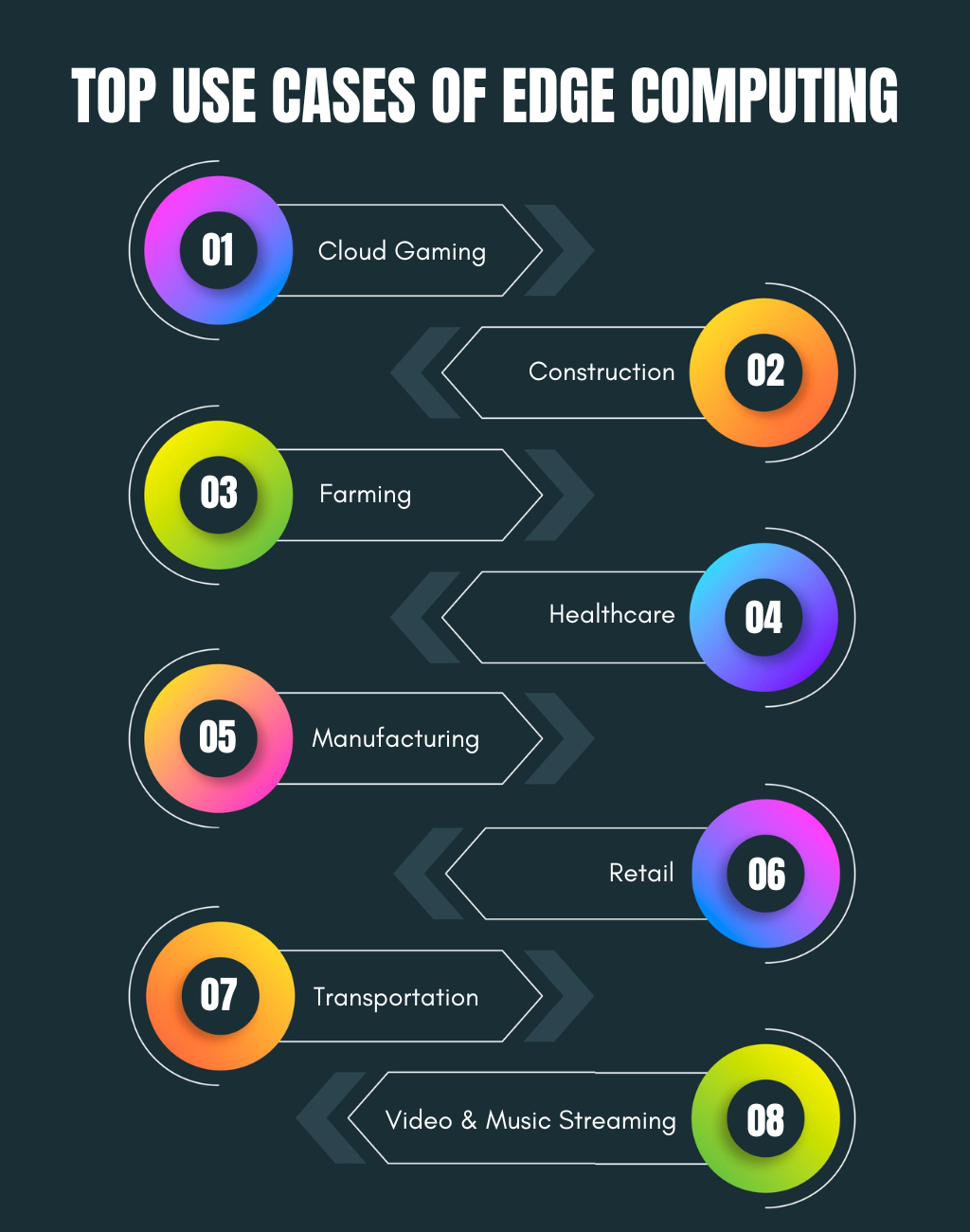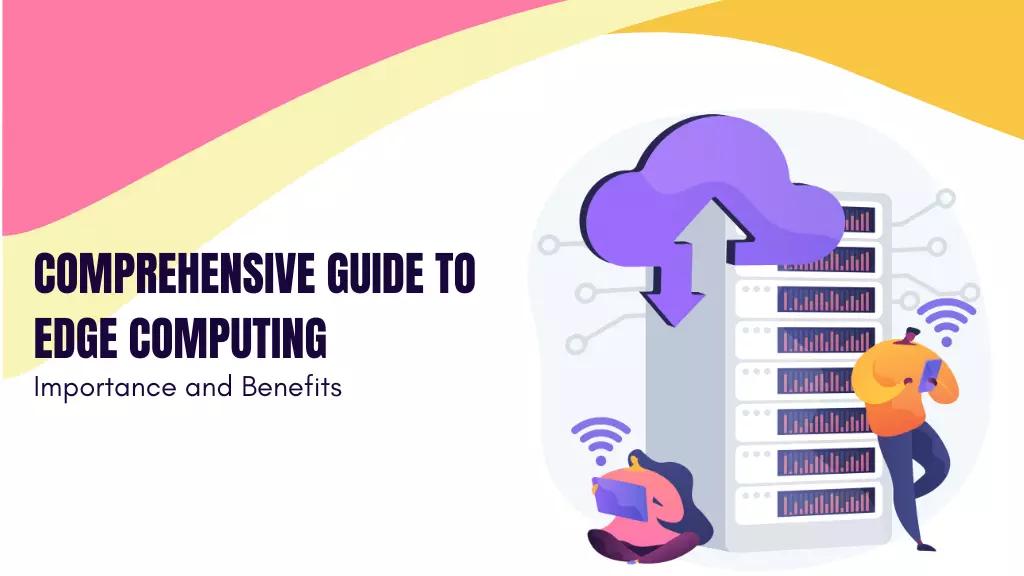What is Edge Computing and It's use cases and benefits? With the prevalence of new tools, technologies, practices, and approaches everything has become simple and accessible in the IT industry, which helps developers, businesses, and the end-users.
According to the reports from Statista, the global edge computing market is expected to reach $274 billion by 2025 from $139 billion in 2019, which clearly shows signs of growth and innumerable opportunities.
So, if you want to know more about edge computing, keep reading!
What is Edge Computing?
Edge Computing is a distributed computing paradigm and architecture which helps in optimizing internet-connected devices and web apps by bringing computing closer to the originating source of the data.
Nowadays where data is a critical aspect of modern business, and handling the virtual flood of data has become challenging, it has been eased with the use of edge computing architecture.
It helps in managing and processing huge-volume data in real-time with greater speed and efficiency to derive action-led results.
With its origin from Content Distributed Networks (CDNs), it helps in enhanced response times, reduced latency, and better bandwidth availability.
Additionally, the possible components of edge computing include Internet of Things (IoT) devices, robots, sensors, point of sales (POS) systems, network, and on-premises infrastructure like bridges, containers, routers, and servers.
Top 8 Use Cases of Edge Computing in 2023
Here is the list of top 8 use cases of Edge Computing for 2023.
-
Farming
-
Manufacturing
-
Retail
-
Video and Music Streaming

1. Cloud Gaming
For cloud gaming companies to deploy their servers as close to the gamers as possible, which helps in reducing lags and providing a fully immersive gaming experience.
2. Construction
In this sector where anything can be dangerous to such an extent that it might put the lives of humans in danger, edge computing can be beneficial. Using on-site cameras, safety devices, and sensors can help to oversee workplace conditions and ensure that safety protocols are being followed to minimize the risks.
3. Farming
Using sensors to collect data in this specific industry can help in increased crop production. It helps farmers to determine optimal harvest and track water usage, nutrient density, soil quality, and other essential factors to ensure quality production.
4. Healthcare
This industry has highly made ways for growth by collecting and analyzing patient data alongside providing improved healthcare services. Collecting data from sensors and medical equipment and devices has helped generate huge volumes of data, and here edge computing has handled it all. It helps in automating the analysis processes to provide better insights which in turn helps the doctors and medical professionals to provide better treatment and help patients avoid the factors that might negatively impact their health.
5. Manufacturing
For the industrial manufacturer to track every stage of manufacturing with environmental sensors that provides real-time analytics. It helps in improving product quality alongside providing insights to make faster and more efficient business decisions.
6. Retail
The retail industry is capable of producing large amounts of data starting from surveillance to sales to inventory. It helps in categorizing the data and identifying threats and business opportunities to provide better services and user experiences onboard alongside hassle-free store checkout.
7. Transportation
Autonomous vehicles produce a massive volume of data every day including the vehicle condition, location, speed, traffic conditions, and others. Collecting and processing the data requires significant computing and here edge computing comes to the rescue. It helps in monitoring and managing the vehicles in real-time based on the actual conditions, without waiting for instructions.
8. Video and Music Streaming
Streaming platforms often cache information and it takes quite a bit of bandwidth, so edge computing helps in decreasing the lag and latency thus enabling more network flexibility to cater to user demands.
In addition, edge computing can also be combined with various other technologies, to make the processes more reliable, manageable, and efficient.
For example - 5G makes edge computing seamless by enabling it to make independent decisions. IoT or connected devices enable edge to reside near the data sources. Containerization allows a standardized deployment environment and several other ways.
Top 6 Benefits of Edge Computingin 2023
Here are list of top 6 benefits of Edge Computing in 2023.
-
Cost Effective
-
Data Volume
-
Efficiency
-
Privacy
-
Quick Responses
-
Scalability and Reliability
Today a large amount of data is produced in different sectors including healthcare, factories, and retail businesses, and it is important to harness the massive data safely.
It requires low latency, and edge computing has the potential to transform businesses at every level, streamlining the business process.
Edge computing brings the virtual world into the physical, by creating systems that help in faster innovation without compromising the quality and services.
It offers effective solutions for businesses associated with moving a tremendous amount of data alongside making congestion virtually nonexistent.
.png)
1. Cost Effective
Pocessing data in different ways in the cloud involves different costs. And edge computing helps to minimize total costs, by reducing the amount of data alongside minimizing bandwidth use and server resources.
2. Data Volume
Moving huge amounts of data can be both technically and financially draining. So, edge computing helps in reducing congestion and processing the data using local storage and servers.
3. Efficiency
It makes the network more efficient, by sending only the required data to the central location by processing data at the edge.
4. Privacy
Security is amongst the greatest concerns when it comes to data. And edge computing eliminates the risks by controlling the sensitive data locally, away from potential threats. It secures the data through encryption with a limited amount of data.
5. Quick Responses
Processing and transmitting data is time-consuming even on a digital aspect. But edge helps in quick and real-time results which helps in reducing latency, bringing the points closer to each other.
6. Scalability and Reliability
It helps in continuing operations even when the communication channels are slow, unavailable, or temporarily down, thus facilitating a reliable source. It also makes it efficient for organizations with edge scalability by deploying and managing only what they need.
As mentioned above are the benefits of edge computing. But the primary advantage is that it helps in enhancing the user experience, alongside unlocking only the essential data to make better business decisions and make way for more growth opportunities.
Read: How to Build Data Warehouse
In addition, also note down the drawbacks of it as well. It will help you eliminate the additional complexity and avoid the points of failure.
Some of the drawbacks include incomplete data since it processes only partial sets of data, limited capability as it lacks standard and integrated architectures, a fast-moving ecosystem that complicates the process, and more.
But do not worry, all these drawbacks can be eliminated once you understand the entire paradigm and work accordingly, for everything has both positive and negative sides.
Wrapping It Up
Edge computing has given data analysis a whole new makeover, and companies are adopting this technology at a very fast pace.
So, if you are interested in knowing how it will help you grow your business and boost the revenue, then get in touch with us and we will help you develop and deliver the best possible solutions for your business.
FAQs About Edge Computing
Is edge related to the cloud?
Edge and Cloud computing are different but complement each other. Cloud accelerates the edge and brings data together, which helps in creating new experiences and applications.
What is the importance of edge computing?
Edge computing has a huge impact on businesses. It helps in optimizing their IT expenses by reducing the cloud processing and storage costs, since it weeds out unnecessary data and only keeps the important data required to make better business decisions.
What are the different types of edge computing?
The different types of edge computing are cloud edge, compute edge, device edge, and sensor edge.

